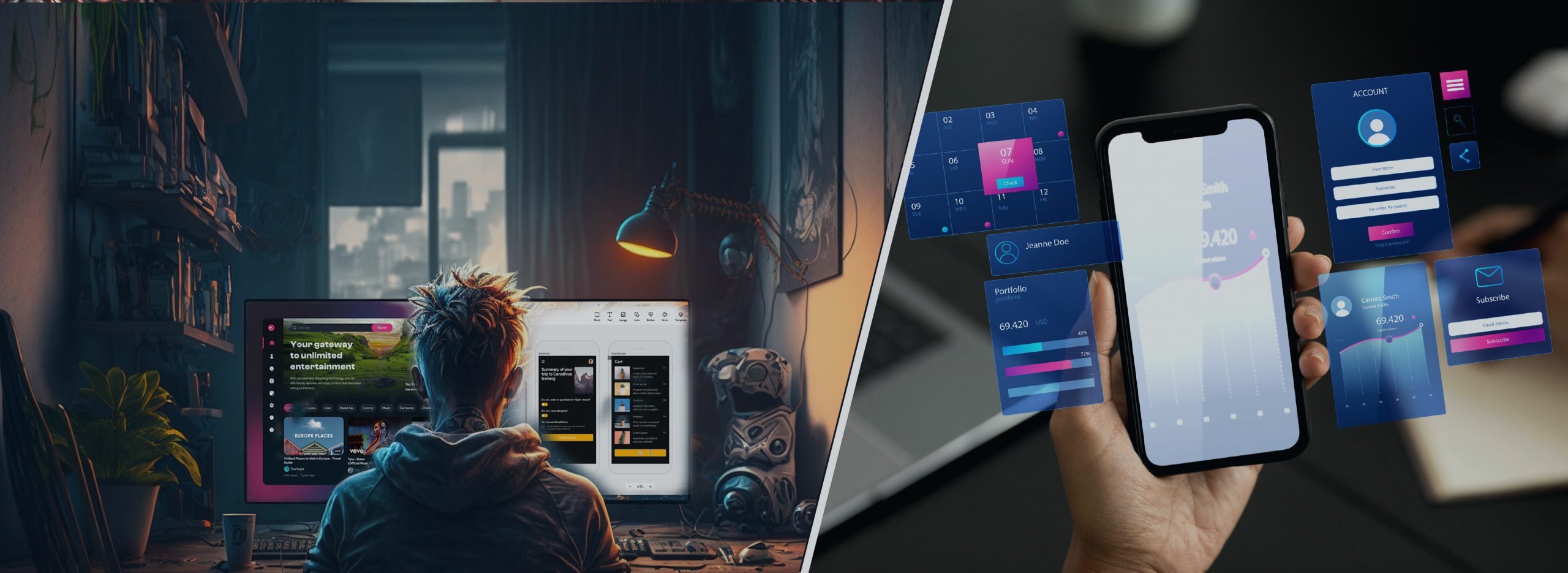Our online engagement continues to evolve as users, and digital experience designers are in a perpetual race to keep up. Brands and their online marketing teams are tasked with staying abreast of the ever-changing customer behaviour, new technological advancements, and design innovations. The secret sauce for crafting more intuitive designs is an unwavering focus on data, analytics, and customer obsession. This steadfast approach has proven its worth, even in the face of the recent tumultuous years.
With the advent of generative AI technologies, UI/UX design has undergone a transformative shift. AI tools, such as Uizard, Khroma, Jasper, and Adobe Firefly, have emerged as invaluable aids in all stages of the design process. They facilitate idea generation, streamline research activities, and enable data-driven user experience decisions. By automating repetitive tasks, these AI tools empower designers to focus on tackling more complex problems.
A consistent user experience across multiple platforms is a top brand priority now. As users interact with applications on various devices like smartphones, tablets, and computers, there is a growing demand for a seamless and personalised experience across all platforms. This has allowed for innovations in designing business applications that offer a tailored and cohesive user experience.

Here are some top innovations that are dominating the conversation in 2024.
1. System Theme (Light/Dark Modes)
The shift in user preferences towards mobile-first experiences has propelled system themes—light or dark modes—to the forefront of UX changes in 2024. This shift is not limited to mobile devices but extends to websites, tabs, TV screens, watches, and other digital interfaces. The increased screen time necessitates UX considerations for factors like eye strain, varying lighting conditions, and battery conservation, particularly on OLED screens. This design approach enhances accessibility and engagement, fostering multi-platform usage and end-user consumption.
2.Bento Grids
Inspired by iconic compartmentalised Japanese lunchboxes, Bento Grids are becoming increasingly popular as a visual feature in UI/UX design. The grid layout design is organised, responsive, and flexible, allowing for complex platform designs. Bento Grids can feature distinct content blocks, create efficient visual structures, guide users’ attention, and improve content comprehension. Designers are increasingly deploying Bento Grids to promote optimised information consumption and a clean aesthetic.
3.Parallax Effect
To attract and retain eyeballs, UX designers are deploying the parallax effect, a visual technique that creates an illusion of depth, motion and immersion on a website or app. Different visual elements scroll at various speeds, mimicking the three-dimensional perceptive nature of human eyes in the real world. This effect can guide the user’s attention, enhance storytelling, and make interfaces feel more dynamic and immersive while ensuring that it isn’t excessively used, which may hamper accessibility.
4.Data Visualisation
Users, today, are more tech-savvy and data visualisation, with visual cues such as charts, graphs, and infographics, help condense large amounts of data and present them in a clear, concise and engaging manner. It is a creative approach that builds a story for the user. It shows them their usage patterns, highlight trends and insights, enhances user interaction qualitatively, and builds trust with the brand. Well designed, this trend has the ability to help brands engage across platforms and facilitate better consumer comprehension.
5.Neumorphism
Neumorphism fuses skeuomorphic design principles with flat design. Bridging realism and minimalism, it creates a soft, extenuated plastic look that seeks to mimic the physical properties of materials. This approach employs subtle shadows and highlights to add depth and dimension to user interfaces. Different elements, such as buttons and cards, extend from or recede into the background, creating a sense of tactility without relying on traditional gradients or textures to guide user interactions meaningfully.
6.VUIs
The popularity of voice commands and natural language processing has caused UX designers to scramble. Voice User Interfaces (VUIs) offer a hands-free and intuitive experience. This innovation allows users to interact with different apps and web functionalities. With voice recognition, NLP capabilities, and chatbot-driven conversational flows, VUI makes digital engagement easier and more efficient . It enhances accessibility, multitasking abilities, and overall user convenience and can easily seamlessly integrate with other input modalities like touch or gestures.
A Program for Next-Gen UX Designers
The ATLAS Edge Executive Program in UI/UX and Digital Design will incorporate all these trends and more. The course will explore integrating AI into the design process and how it can help build low-code, no-code designs. The course will also examine emerging trends like micro-interactions, AR/VR, emotional design, gesture and navigation, and other features.
Learn more about the program here.

